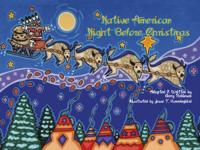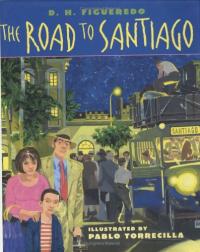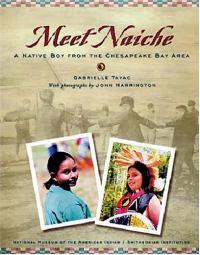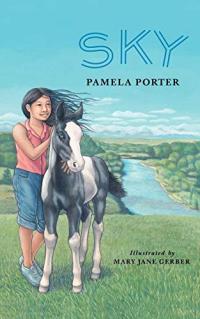
Coyote Christmas: A Lakota Story

Native American Night Before Christmas

Virginia’s coat is too small and hardly protects her from the frigid South Dakata winter. As Christmas approaches, all the children on the Sioux reservation look forward to receiving boxes full of clothing sent by congregations in the East. Virginia spots a beautiful gray fur coat but holds back tears as it is claimed by one of her classmates. Later, Virginia can’t believe what Mama brings home. Based on an event from the author’s childhood, this picture book captures the giving spirit of Christmas.
The Christmas Coat: Memories of My Sioux Childhood

Charro Claus and the Tejas Kid

The Road to Santiago

Celebremos Navidad con Villancicos, Regalos y Paz

The narrator recalls his first Christmas in Japan and why his mother decorated a tree with a thousand paper cranes as she relives her holidays in California. Based on a family story, Say’s illustrations evoke a holiday in two cultures.
Tree of Cranes

An elderly kamishibai man travels the route on which he once told stories using his paper theater. Though the city is now crowded and noisy, the children — now grown — remember and stop once more. A note about kamishibai and stunning illustrations create broad reader appeal.
Kamishibai Man

Erika-San

Emma’s Rug

A series of memories from this Caldecott Medalist’s life begins in Japan and moves between the two cultures of which he is part. The revealing narration is interwoven with photographs, cartoons, sketches and more. Slightly older, more sophisticated readers may enjoy Say’s slightly fictionalized autobiography, Ink-Keeper’s Apprentice.
Drawing from Memory

Though Taro is known for his laziness, he is also clever and so finds a way to become wealthy. Realistic illustrations place Taro and his mother in a long ago Japan in this spritely retelling of a traditional trickster tale.
Boy of the Three Year Nap

Boy in the Garden

Keeping Promises: What Is Sovereignty and Other Questions About Indian Country

Meet Naiche: A Native Boy from the Chesapeake Bay Area

To many Native Americans, the 13 cycles of the moon represent the changing seasons and the passage of time. Each moon has its own special name that, while varying among the tribal nations, is consistent with the legend that the 13 scales on Old Turtle’s back hold the key to these moons. The authors present 13 poems that take readers through the year, from the “Moon of Popping Trees” — when the “cottonwoods crack with frost” — to the “Big Moon” of the Abenakis. — Publishers Weekly
Thirteen Moons on Turtle’s Back

The Trickster and the Troll

Sky

This collection of familiar Iroquois stories, told by elder and tribal scholar Tehanetorens, is made unique by the fact that they are also told in pictographs. There is a short essay on picture writing, and many pages of translations of the symbols themselves, including those for each of the clans of the Six Nations. The non-pictograph illustrations, by Mohawk artist Kahionhes (John Fadden), expand the meaning and power of the stories. — Oyate
Legends of the Iroquois

The Crying Christmas Tree

When a little boy, traveling with his parents and grandparents, has trouble sleeping at night, he realizes that the caribou spirit is so strong in him that he can no longer remain a human. But his connection to his human family is strong also, and so he gives them the gift of the caribou when they are hungry. John Blondin shares the story as told by his father, elder George Blondin (Dene). Bilingual English/Dogrib. — Oyate
The Legend of Caribou Boy

Wonderstruck

Twist it Up: More than 60 Delicious Recipes from an Inspiring Young Chef

